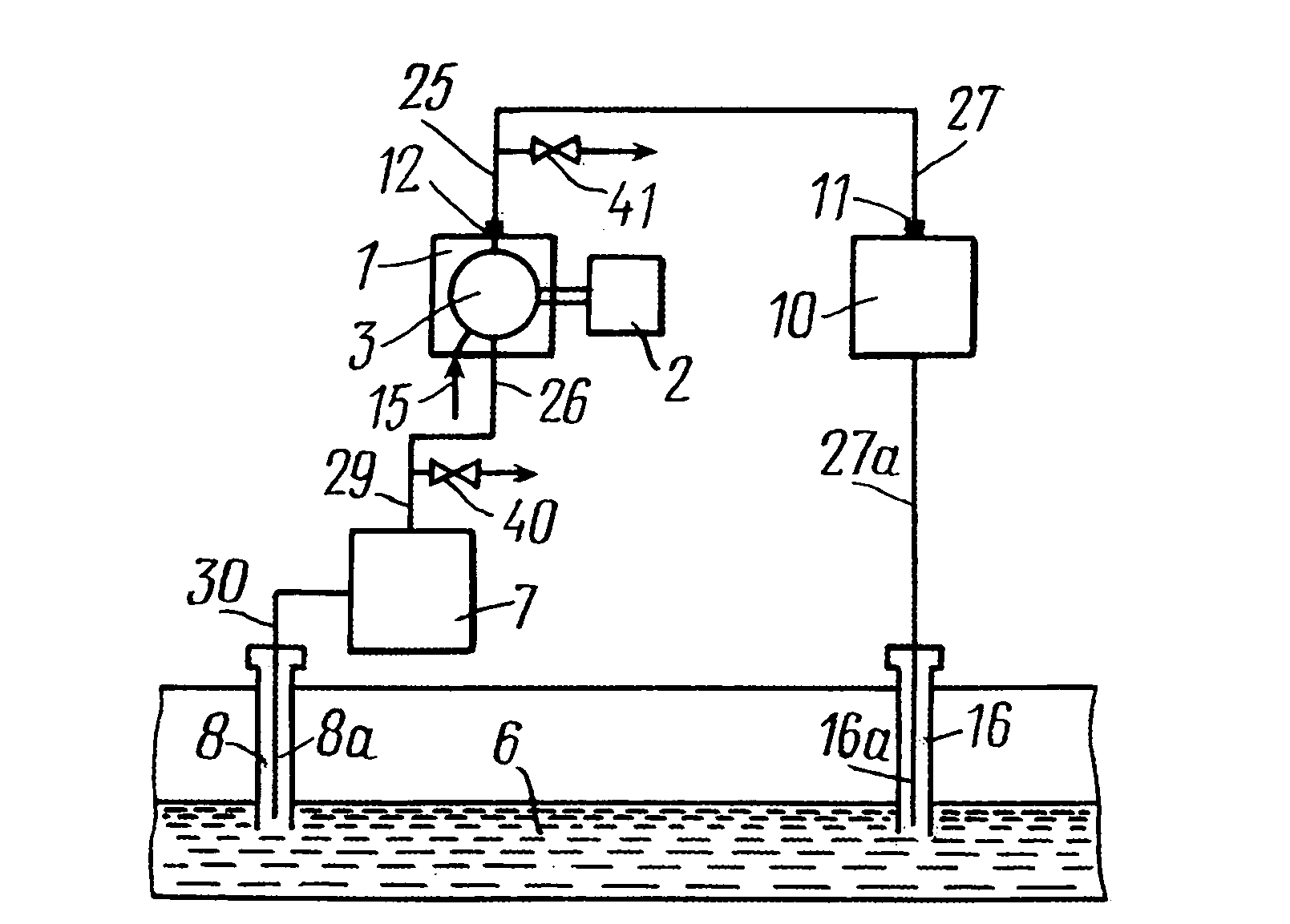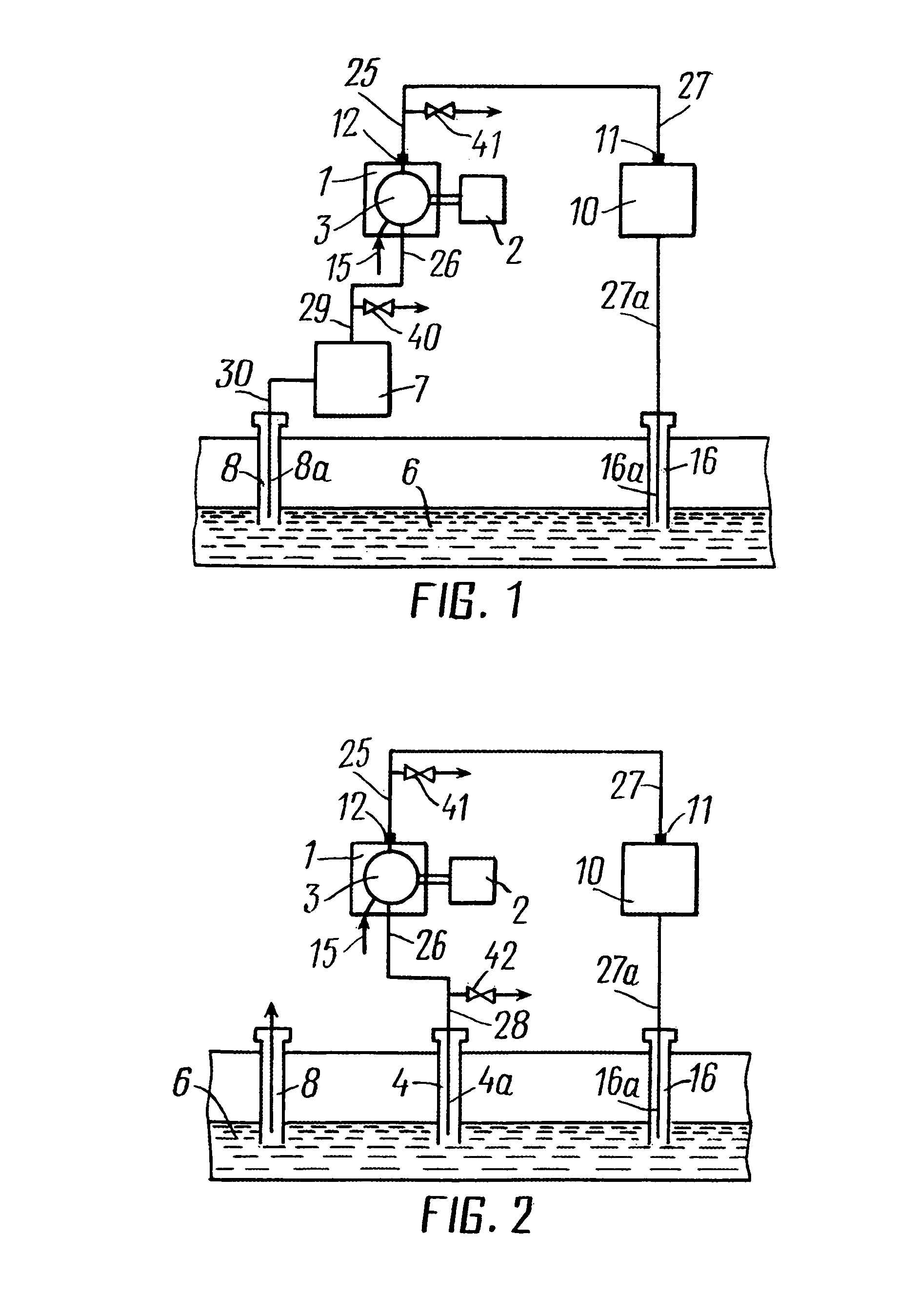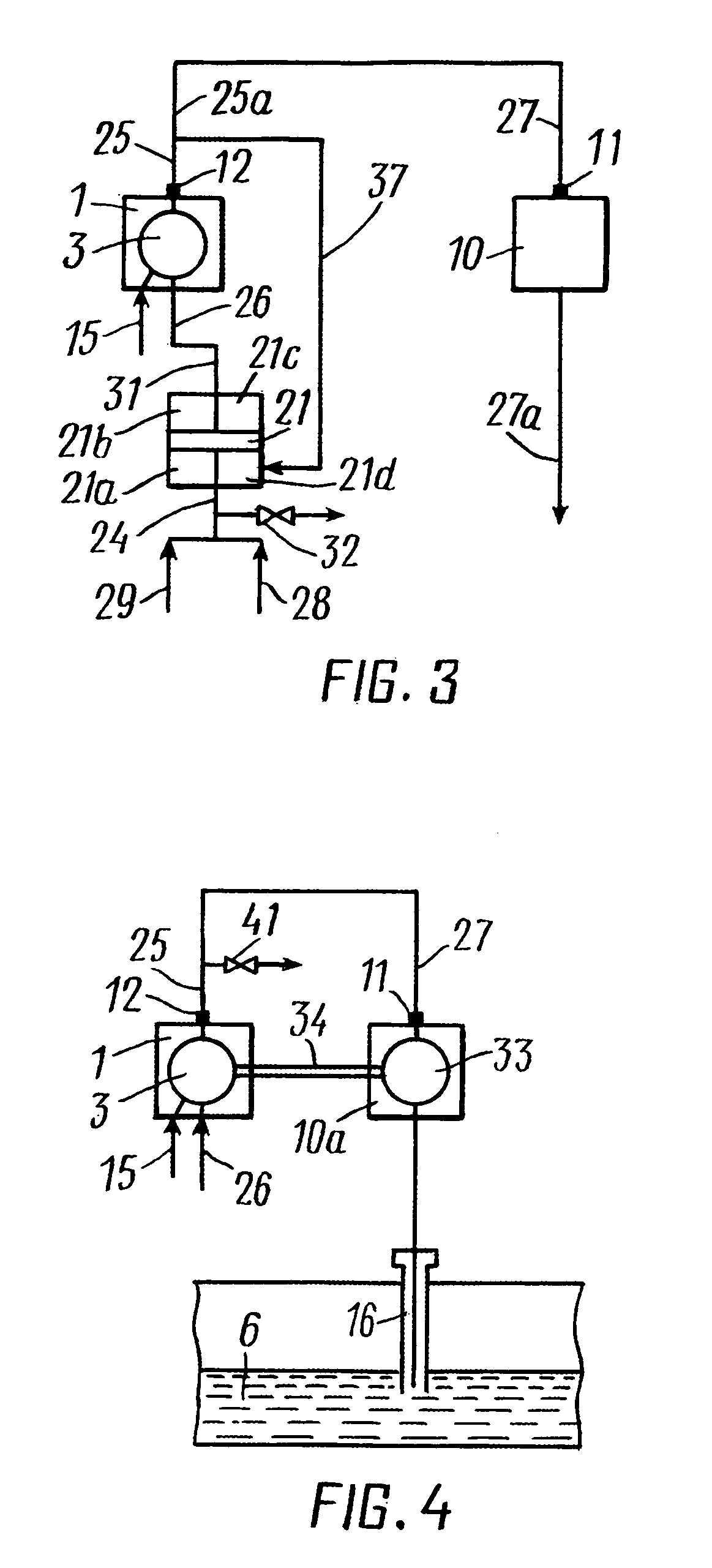Method and system for recovery of hydrocarbons from a hydrocarbon-bearing information
a hydrocarbon and information technology, applied in the field of oil and natural gas production, can solve the problems of reducing the ability of the produced gaseous component to burn, consuming the energy produced during combustion of such expensive and critical commodities, and affecting the recovery of hydrocarbons. the effect of liquid hydrocarbon recovery
- Summary
- Abstract
- Description
- Claims
- Application Information
AI Technical Summary
Benefits of technology
Problems solved by technology
Method used
Image
Examples
Embodiment Construction
[0054]The present invention is susceptible of embodiment in many different forms. Certain embodiments of the present invention will herein be discussed in detail. However, the present description is to be considered an exemplification of the principles of the invention and is not intended to limit the invention to the embodiments illustrated. In the discussion of the Figures, the same numbers will be used to refer to the same or similar components throughout the description.
[0055]According to the present invention a hydrocarbon-containing fluid is recovered from a hydrocarbon-bearing formation through at least one production well. A gaseous component of the fluid is separated from the fluid. At least a part of the gaseous component is combusted with air in a power plant, from which an exhaust gas resulting from said combustion is discharged. A gas, comprising at least a part of the exhaust gas, is injected into the formation through at least one injection well. Said air and said at ...
PUM
 Login to View More
Login to View More Abstract
Description
Claims
Application Information
 Login to View More
Login to View More - R&D
- Intellectual Property
- Life Sciences
- Materials
- Tech Scout
- Unparalleled Data Quality
- Higher Quality Content
- 60% Fewer Hallucinations
Browse by: Latest US Patents, China's latest patents, Technical Efficacy Thesaurus, Application Domain, Technology Topic, Popular Technical Reports.
© 2025 PatSnap. All rights reserved.Legal|Privacy policy|Modern Slavery Act Transparency Statement|Sitemap|About US| Contact US: help@patsnap.com



